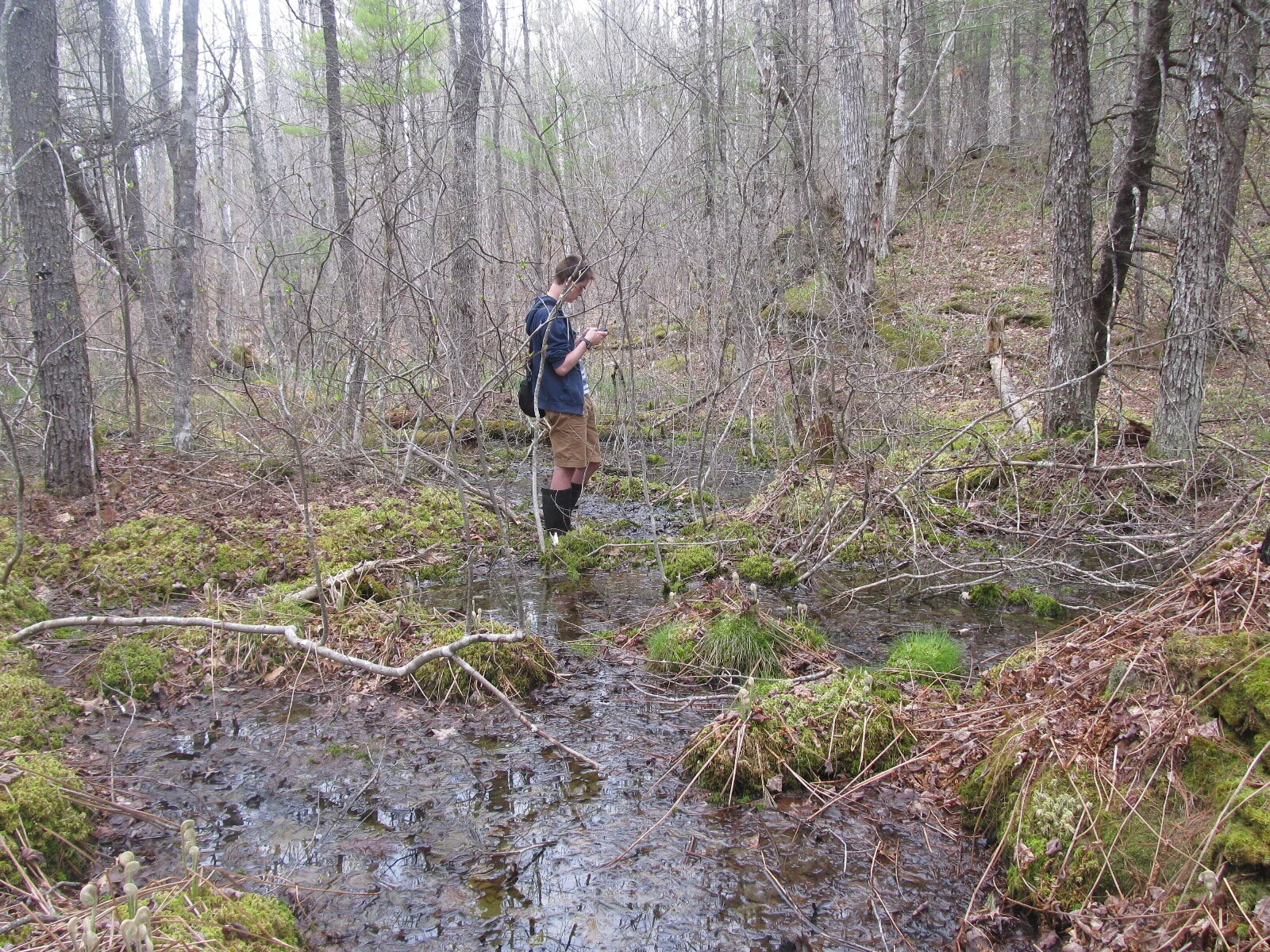Vernal pools are small seasonal and temporary wetlands that ‘’spring” to life soon after snowmelt. As the winter snows melt, the amphibians that were hidden under ice and snow begin to emerge, some even before the snow is entirely gone. After a long winter under snow in the forest, spotted salamanders and wood frogs make their way to vernal pools to mate and lay eggs. They don’t stay long before they head back to the forest for the rest of the year and leave their eggs to hatch on their own. Fairy shrimp rely on vernal pools, too, and many other amphibians and invertebrates also take advantage of these small wetlands with their abundance of life.
Springtime or vernal pools are typically small and isolated, often going unnoticed or seen as simple “puddles”. In this talk, we explore vernal pool ecology and biodiversity through photos and sounds, learning what makes a forest puddle a vernal pool and who depends on these unique wetlands for producing the next generation. And who uses these special habitats as a motel, diner, or temporary home!
You can find NH Fish & Game’s vernal pool documentation manual here. Citizen scientists: the Nongame and Endangered Wildlife Program is seeking volunteers to help fill gaps in their species distribution maps, with a special focus on three species of rare frogs: northern leopard frogs, mink frogs, and Fowler’s toads. More info here. Scroll down for live links to the rest of the sites Lynne mentions at the end of the talk.
Naming & Noticing Challenge:
Can you learn to identify by sight and sound these three denizens of vernal pools?
Learn more about vernal pools:
https://www.wildlife.state.nh.us/
https://www.maine.gov/ifw/docs/Forestry%20Habitat%20Management%20Guidelines.pdf
https://www.wildlife.state.nh.us/nongame/index
https://www.des.nh.gov/organization/div isions/water/wetlands/index.htm
https://extension.unh.edu/topics/natural-resources
Banner image: Exploring a vernal pool in springtime. Photo: Lynne Flaccus

